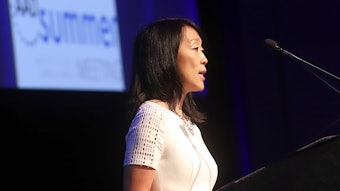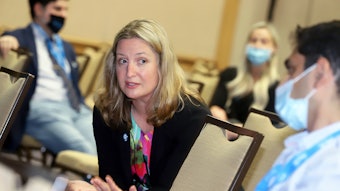New FDA approvals mean new treatment options for dermatology
Experts discuss recently approved drugs for the treatment of systemic conditions with cutaneous manifestations, as well as side effects.

The FDA is working overtime — not just on review of COVID-19 vaccines and therapies — but on a host of other new drug approvals. Notably, many new drugs offer new treatment options for dermatologic diseases. Friday’s session, “New Medications in the New Normal” (U008) scans the list of new drugs and their potential impact on dermatology.
The pandemic didn’t slow the FDA’s efforts to complete 53 novel drug approvals in 2020 and another 25 during the first half of 2021. According to session director Vinod Nambudiri, MD, MBA, FAAD, associate physician in the department of dermatology at Brigham and Women’s Hospital, this session will spotlight those recently approved drugs for the treatment of systemic conditions with cutaneous manifestations (such as acne, Chagas disease, neurofibromatosis type 1, and progeria), as well as medications with cutaneous side effects.
“Several of these agents are medications that have implications for the management of dermatologic conditions, including medications for the treatment of neurofibromatosis, head lice, acne, and actinic keratoses,” Dr. Nambudiri said.
Upon review of the new therapies, Dr. Nambudiri said, dermatologists will be able to identify the mechanism and indications for each new medication, cite its relevance to dermatology, and recognize specific cutaneous effects of these novel therapeutics.
For example, clascoterone is a newly approved topical cream for the management of acne. It acts as a topical androgen receptor inhibitor. Although systemic agents with hormonal mechanisms such as oral contraceptives and spironolactone have been available for decades, this drug represents a new tool for dermatologists to offer patients with hormone-sensitive acne, he said.
Another agent, tirbanibulin, is a recently approved treatment for actinic keratoses. It responds through inhibition of microtubules at the cellular level to stop precancerous lesions from proliferating. Given the increasing rates of skin cancer and the aging population, Dr. Nambudiri said having additional treatments for the management of actinic keratoses represents an advance for managing neoplastic growths.
Of course, there are other patient considerations, even if the drugs have received approval, including the patient’s out-of-pocket expense and the full scope of the drug’s efficacy, Dr. Nambudiri said.
“As new medications are emerging, it’s important for dermatologists to familiarize themselves not only with their use and effects, but also their costs and limitations,” he said. “This session will attempt to address these factors for a variety of new therapeutics in dermatology to help dermatologists make informed decisions with their patients.”











